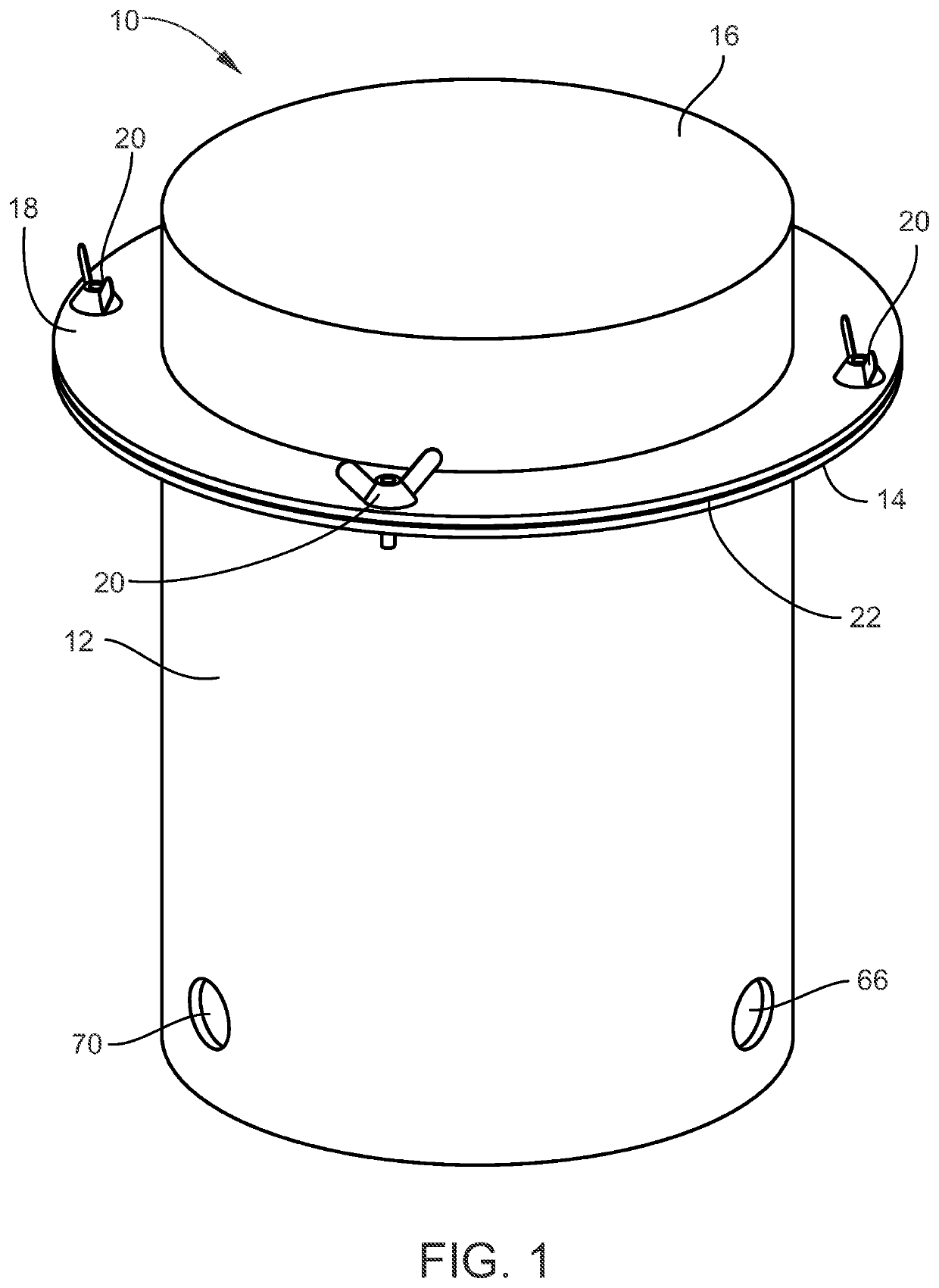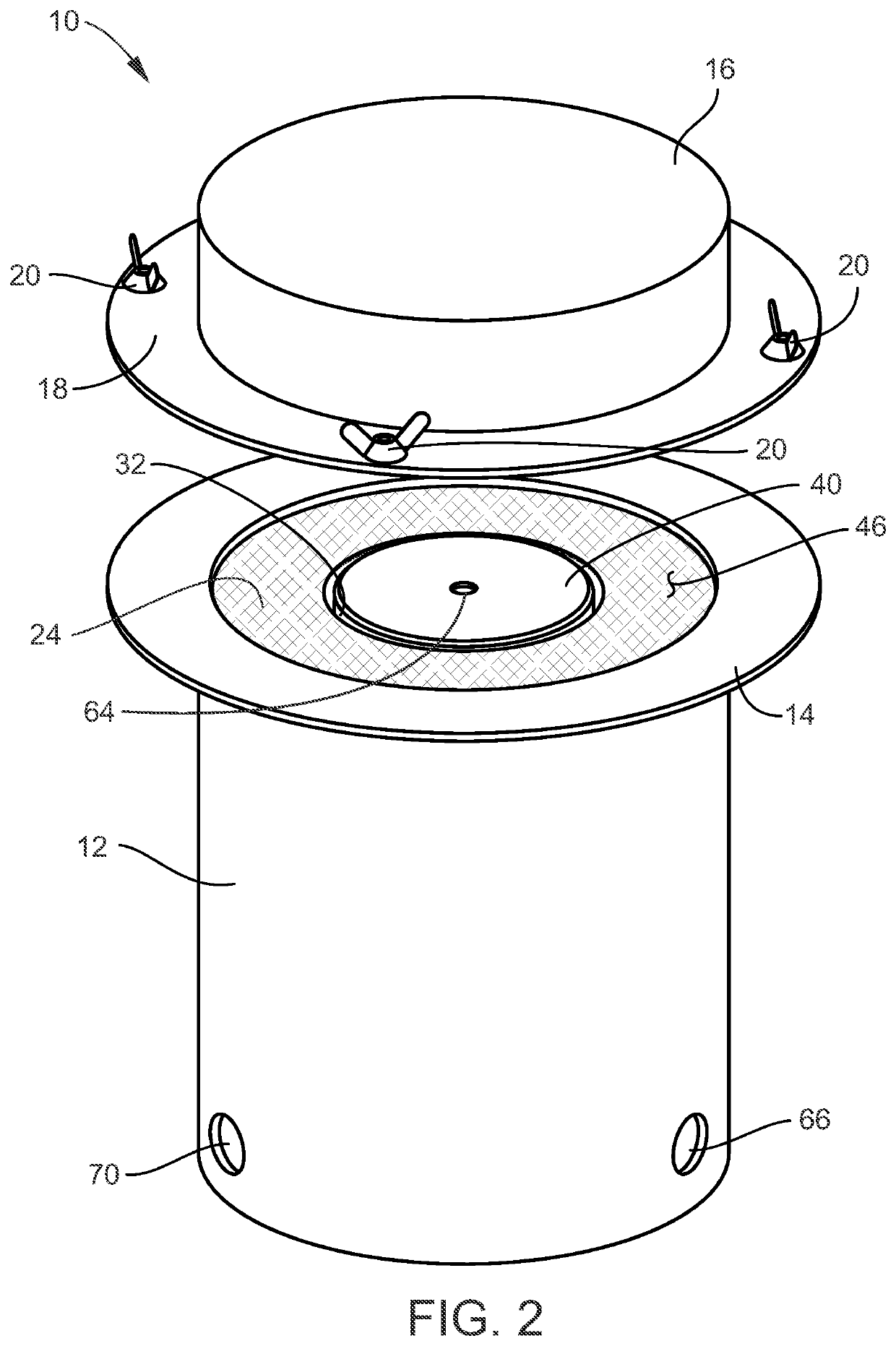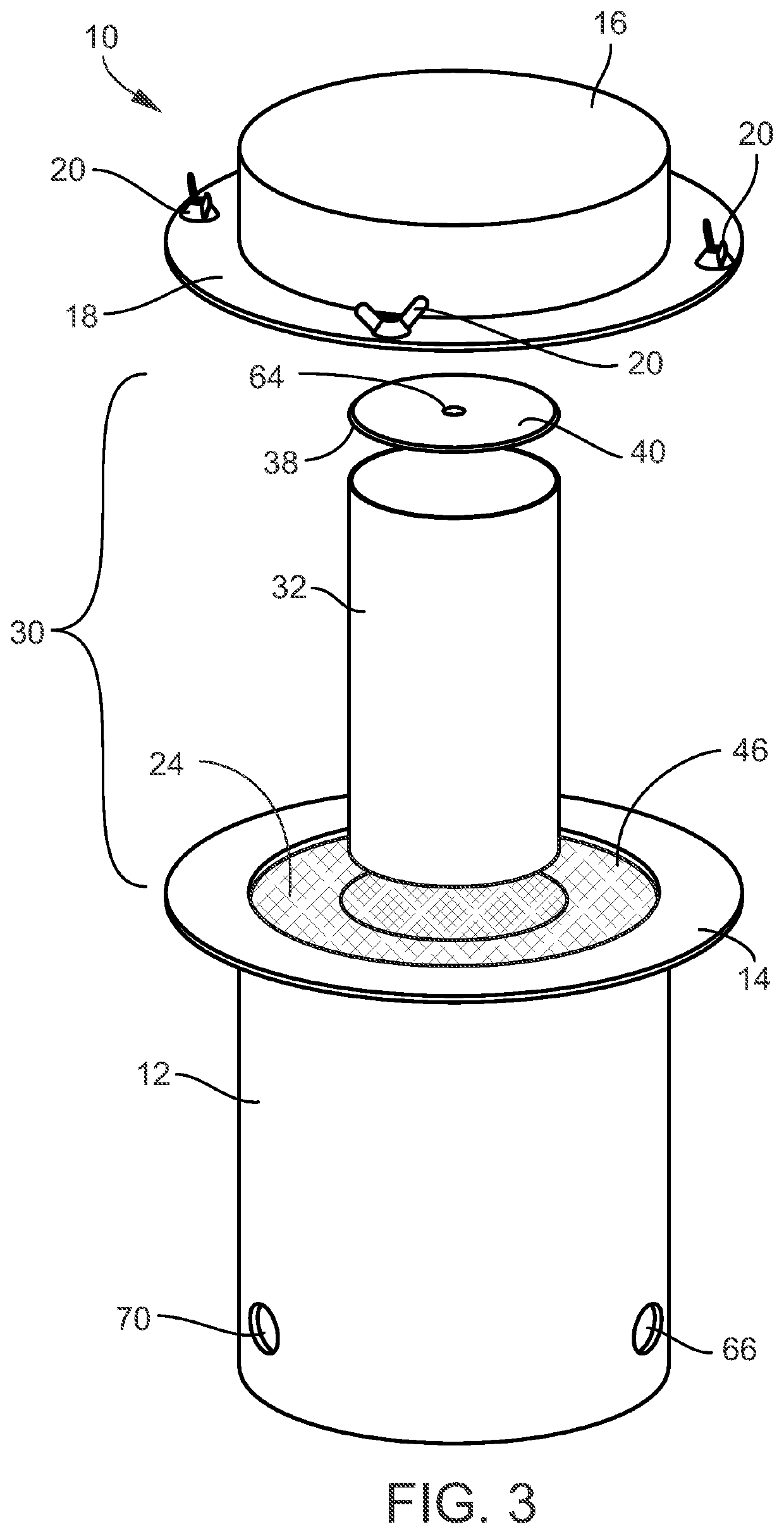Adiabatic Concrete Calorimeter and Method
a concrete calorimeter and adiabatic technology, applied in the direction of calorimeters, instruments, material heat development, etc., can solve problems such as introducing errors into the testing process
- Summary
- Abstract
- Description
- Claims
- Application Information
AI Technical Summary
Benefits of technology
Problems solved by technology
Method used
Image
Examples
Embodiment Construction
[0033]Referring now to the Figures, an adiabatic concrete calorimeter 10 is shown, and includes a stainless steel thermal chamber 12 having an outwardly-extending flange 14 surrounding its top opening that is adapted to receive and support a removable lid 16. The lid 16 has an outwardly-extending flange 18 secured to the flange 14 of the thermal chamber 12 by a series of spaced-apart bolt and wing-nut assemblies 20. A vapor barrier sheet 22 is positioned between the top surface of the thermal chamber flange 14 and the bottom surface of the lid flange 18 and held in a sealing condition by the tightened wing nut assemblies 20 that force the thermal chamber flange 14 and the lid flange 18 into intimate sealing contact. The thermal chamber 12 includes a void 24 into which a heat well subassembly 30 is placed.
[0034]The heat well subassembly 30 includes a test cylinder container 32 wrapped with flexible heating elements 34 in the form of a high temperature silicone over-molded resistive t...
PUM
| Property | Measurement | Unit |
|---|---|---|
| 90 degree angles | aaaaa | aaaaa |
| height | aaaaa | aaaaa |
| thickness | aaaaa | aaaaa |
Abstract
Description
Claims
Application Information
 Login to View More
Login to View More - R&D
- Intellectual Property
- Life Sciences
- Materials
- Tech Scout
- Unparalleled Data Quality
- Higher Quality Content
- 60% Fewer Hallucinations
Browse by: Latest US Patents, China's latest patents, Technical Efficacy Thesaurus, Application Domain, Technology Topic, Popular Technical Reports.
© 2025 PatSnap. All rights reserved.Legal|Privacy policy|Modern Slavery Act Transparency Statement|Sitemap|About US| Contact US: help@patsnap.com



